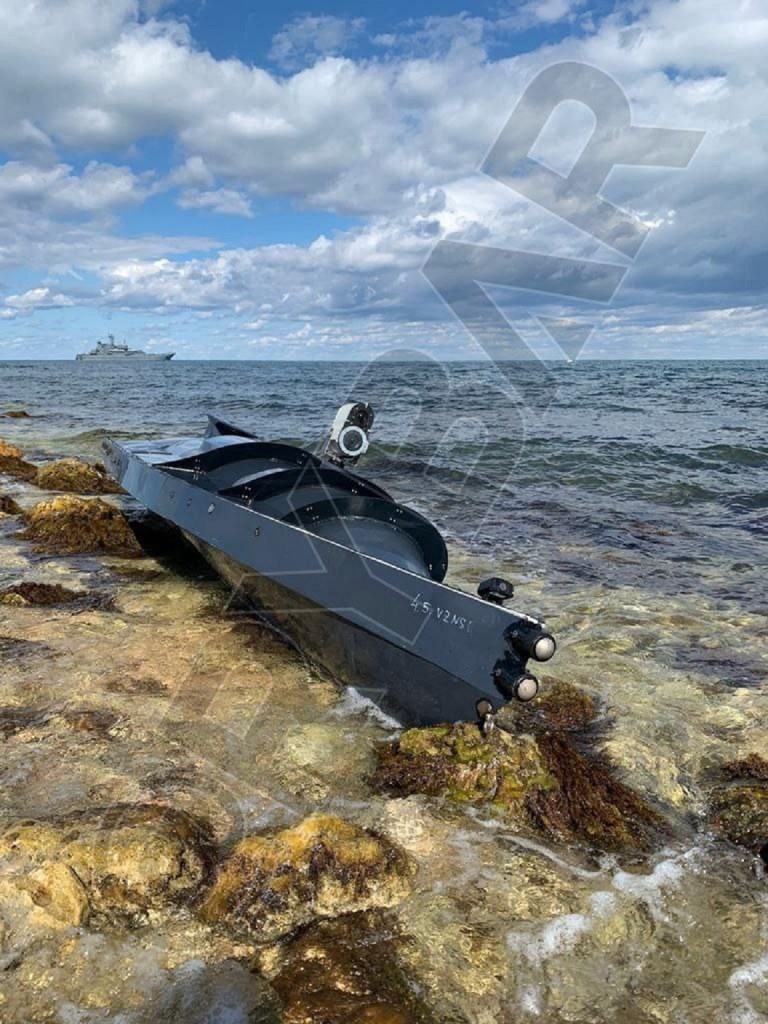When the Costa Concordia hit a rock near Tuscany and dipped into the Mediterranean in 2012, people around the world wondered how the captain of a cruise ship carrying 4,229 people could have made such a simple yet fatal miscalculation. Altogether, 32 passengers died.
“Ships worth hundreds of millions of dollars shouldn’t be able to be manually driven onto the rocks. We have the technology available to control these vessels,” marine engineer Michael Johnson, who worked as vice-president of project management at Crowley Maritime at the time, told me in a phone interview from Boston. His company ultimately won a bid to perform what, at $1.5 billion, became the most expensive commercial salvage of all time.
Videos by VICE
Working in Italy for a year, there wasn’t a day he didn’t see that ship overturned on its side. Soon, his question of how this could have happened turned into a second question: How could he prevent it from happening again?

“My take on it was starting Sea Machines,” said Johnson. His startup, launched in 2014, is currently conducting tests off the coast of Massachusetts for its connected, advanced driver-assistance system for workboats. It intends to launch its first product—the Sea Machines 300 retrofit system—this summer.
In the autonomous revolution that is underway, nearly every transportation machine will eventually be self-driving. For cars, it’s likely going to take decades before we see them operating freely, outside of test conditions. Some unmanned watercraft, on the other hand, may be at sea commercially before 2020.
That’s partly because automating all ships could generate a ridiculous amount of revenue. According to the United Nations, 90 percent of the world’s trade is carried by sea and 10.3 billion tons of products were shipped in 2016. According to NOAA’s National Ocean Service, ships transported $1.5 trillion worth of cargo through US ports in 2016. The world’s 325 or so deep-sea shipping companies have a combined revenue of $10 billion.
Read More: The US Navy’s Robotic Boats Are Getting Smarter
Besides freight shipping, sea vessels of all kinds are crucial to a variety of industries including wind farming, oil and gas exploration, fishing, and climate and environmental research. This has made for very crowded waters.
Startups and major firms like Rolls Royce are now looking to automate the seas and help maritime companies ease navigation, save fuel, improve safety, increase tonnage, and make more money. As it turns out, autonomous systems for boats aren’t supremely different than those of cars, beyond a few key factors—for instance, water is always moving while roads are not, and ships need at least a couple miles to redirect.
Buffalo Automation, a startup in upstate New York that began at the University at Buffalo, just raised $900,000 to help commercialize its AutoMate system—essentially a collection of sensors and cameras to help boats operate semi-autonomously. CEO Thiru Vikram said the company is working with three pilot partners, and intends to target cargo ships and recreational vessels first.
Through testing in the Great Lakes, Vikram discovered that only one ship at a time can pass through its locks and canals. If a boat arrives early or late, it may idle and waste fuel. Algorithms and sensors could be used to interpret weather and seafaring conditions, and automatically adjust speed to meet the scheduled time, he said.
At the same time, locks and canals are also narrow and congested, increasing chances of hitting another vessel or running aground. These risks of allisions (when a boat hits a stationary object) often mean higher insurance expenses, said Vikram. Automation, he continued, can reduce risks and costs.
Autonomous ships are an area of particular interest for the International Maritime Organization (IMO), which sets the standards for international waters. It launched a regulatory scoping exercise last year to analyze the impact of autonomous boats. By the time it wraps in 2020, market demand may make it so that we already have semi-autonomous and unmanned vessels at sea. “It’s a friendly environment right now in helping us push this technology forward,” said Johnson of Sea Machines.
For instance, Massachusetts-based Autonomous Marine Systems is already using unmanned sailing drones—Datamarans—to collect ocean data, mostly for the offshore energy sector.

“The oceans are part of the largest carbon ‘transactions’ on the planet. The gold standard for measuring that carbon transport is to perform co-local and simultaneous measurements above and below the surface of the oceans,” explained co-founder and chief technology officer Eamon Carrig in an email to Motherboard. Typically, this is done using drifting, moored, or ship-launched observation systems—all of which are expensive.
“When you first start looking into this world of ocean observation, the costs are totally bonkers,” wrote Carrig. Because many waterborne industries are controlled by relatively few companies, new players’ entry on the market may force them to be more competitive and ultimately drive down costs.
Johnson is confident the maritime industry and its regulators will soon embrace connected and autonomous ships. “Every company has their mandate that safety is first,” he said. “But definitely, things that greatly improve the bottom line do see pretty rapid adoption.”
Motherboard’s documentary series “Dear Future” was nominated for a Webby. We’d love your vote, and it only takes a minute.




